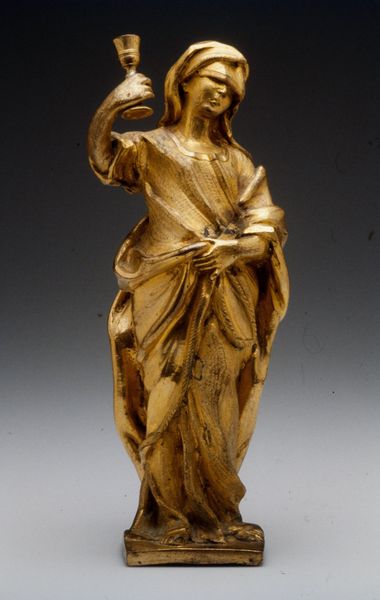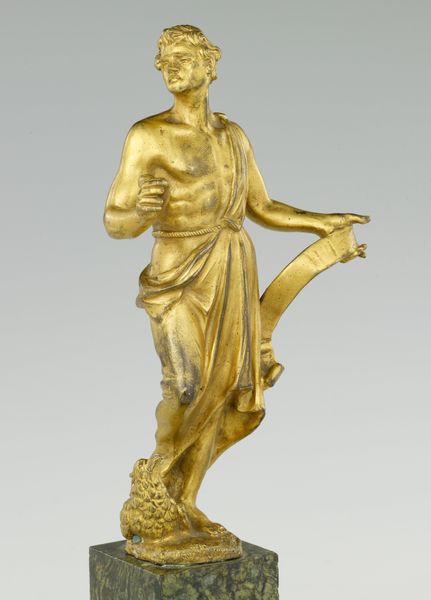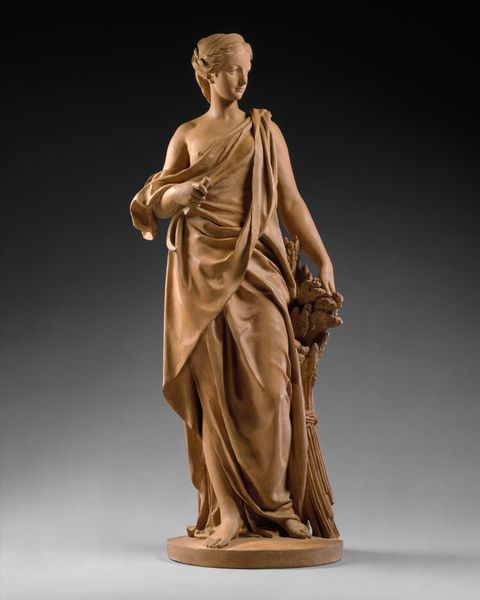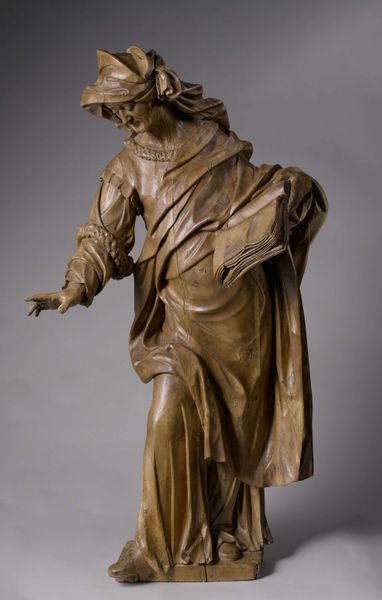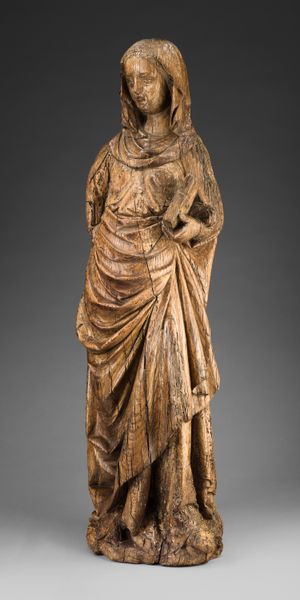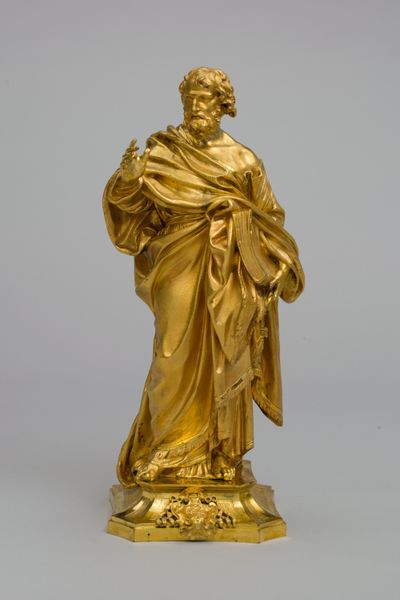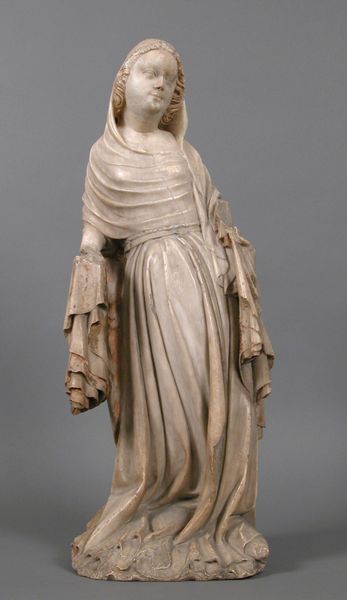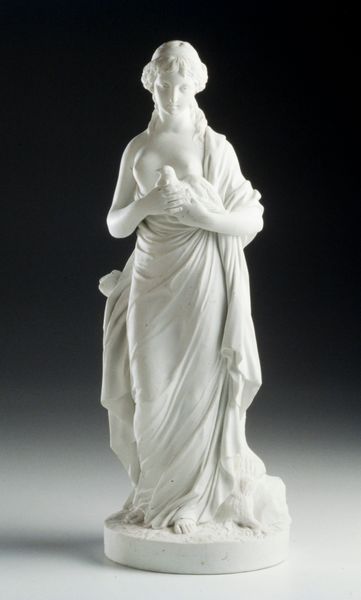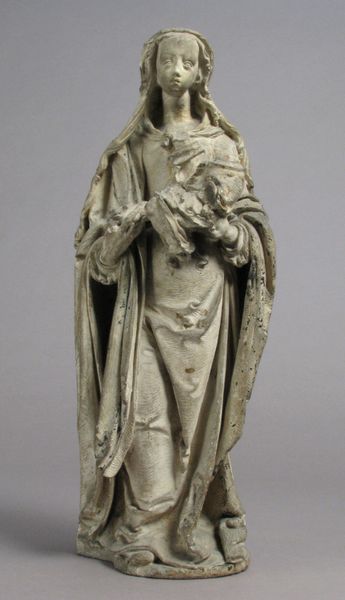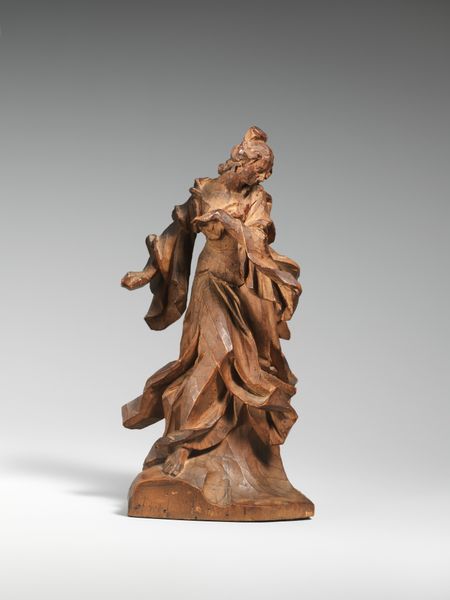
gold, sculpture
#
portrait
#
baroque
#
sculpture
#
gold
#
figuration
#
sculpture
Dimensions: 10 1/8 x 4 7/8 x 3 3/4in. (25.7 x 12.4 x 9.5cm)
Copyright: Public Domain
Curator: Here we have an intriguing artwork from around 1600 titled "Vestal Figure," housed here at the Minneapolis Institute of Art. Editor: The gold practically glows, doesn't it? It creates such an opulent, almost blinding impression at first glance. Curator: It does! As a piece that dates back to the Baroque era, the use of gold highlights the figure's importance. In its time, sculpture became an integral instrument to express prestige within social and political circles, often highlighting ideals through mythology or symbolism. Editor: The materiality speaks volumes too. The choice of gold itself connects to power structures. Was this destined for a religious institution, or perhaps a private collection showcasing wealth? Thinking about the craft itself, was this solid gold, or gilded? The answer greatly changes our understanding of the patron's intent and the maker's labor. Curator: Good question! I am convinced the Vestal Virgin embodied powerful ideals for its time. Remember that vestal virgins represented chastity and service to the state. I wonder about how her story was valued in a moment of political struggle. Editor: Looking closer, I'm struck by the way the drapery clings. The folds appear to mimic the ways that the female body was perceived and understood by the society of that time. Were the sculptors challenging societal views or simply reinforcing the accepted image? The textures achieved in the gold--the hammer work, the polishing--those processes themselves tell us much about artistic skill. Curator: Precisely, and the art served the cultural climate it emerged from. The artist's decisions around materials, presentation, and subject matter show how cultural stories are expressed within these kinds of objects, giving new meaning to ancient lore. Editor: Exactly. This sculpture encourages us to delve beyond mere aesthetic appreciation to uncover the underlying production and consumption processes of its era. That's what makes material analysis so vital. Curator: And it helps us situate it within its socio-political landscape, providing an intriguing glimpse into 17th-century beliefs and artistic production. Editor: It leaves you contemplating more than just the figure; you're contemplating its making, meaning, and value.
Comments
No comments
Be the first to comment and join the conversation on the ultimate creative platform.
